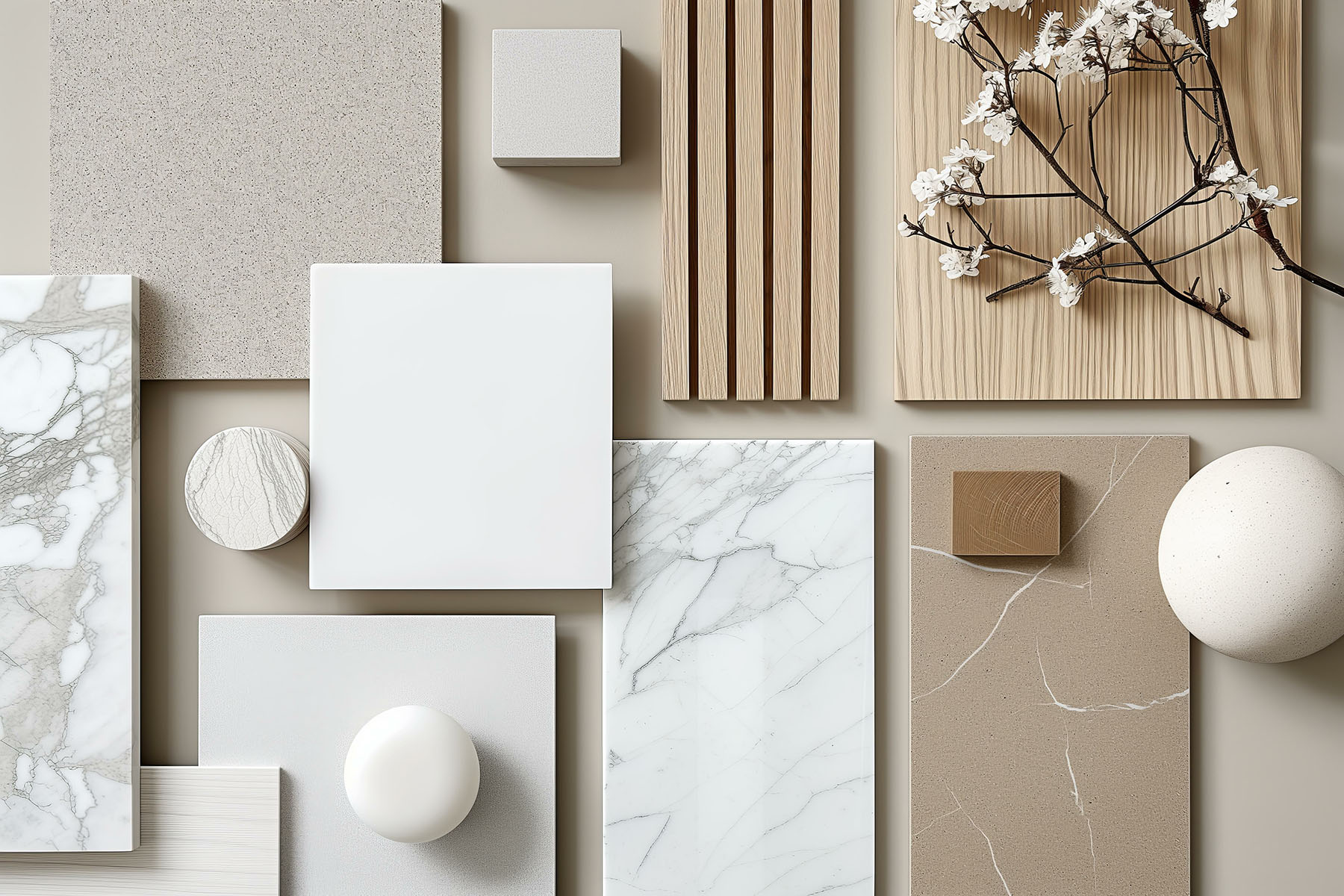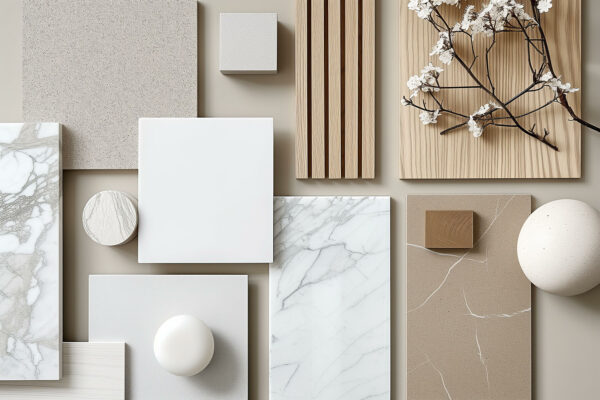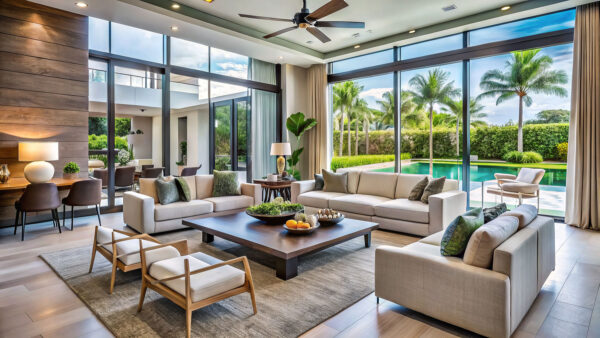Small rooms can feel cramped and uncomfortable if not designed properly, but with the right interior design techniques, you can create the illusion of spaciousness. Whether you live in a small apartment or simply have a compact room that needs a transformation, there are numerous ways to maximize space while keeping it stylish and functional. By making smart choices regarding color schemes, furniture arrangement, lighting, and decor, you can create a visually larger and more inviting space. Let’s explore how to make small rooms look bigger with these expert design strategies.
1. Choose the Right Color Palette
Color plays a crucial role in how large or small a space feels. The right color choices can make a small room appear airy and open, while the wrong ones can make it feel enclosed and even claustrophobic. Colors impact the perception of space by reflecting light or absorbing it, influencing how spacious a room appears.
- Light and Neutral Colors: Shades like white, beige, soft gray, and pastels reflect light, making a room feel larger and more open. These colors create a seamless look by reducing harsh contrasts, which helps maintain visual continuity and an airy feel.
- Monochromatic Schemes: Using different shades of the same color can create a cohesive and flowing effect, reducing visual fragmentation and making the space feel expansive. Pairing light-colored walls with similarly toned furniture keeps the decor subtle and harmonized.
- Cool Tones for Depth: Blues, greens, and cool grays give a receding effect, making walls appear farther away and creating an illusion of depth. These colors work exceptionally well in bedrooms and living spaces where a serene and airy environment is desired.
- Accent Walls Wisely: While bold colors can add personality, they should be used sparingly. Opt for an accent wall with a soft contrast, like a light pastel or subtle textured wallpaper, rather than dark, overpowering tones that can shrink the space.
2. Maximize Natural and Artificial Lighting
Lighting is one of the most effective tools in making small rooms feel bigger. A well-lit room appears more open and airy, while dark corners make a space feel smaller. Using a combination of natural and artificial light can enhance the room’s perception of space.
- Allow Natural Light: Keep window treatments minimal, using sheer curtains or blinds that allow sunlight to enter. Heavy drapes block light and create shadows that make a room feel smaller.
- Use Mirrors to Reflect Light: Placing mirrors opposite windows or light sources enhances brightness and adds depth to the room. A large mirror on one wall can significantly amplify the space by reflecting both light and room elements.
- Layer Lighting: Combine different light sources, including ceiling lights, floor lamps, wall sconces, and under-cabinet lighting. This approach eliminates shadows and ensures even illumination across the room.
- Opt for Recessed or Wall-Mounted Lighting: Bulky light fixtures can visually crowd a space. Recessed lighting, track lights, and slim-profile sconces keep the ceiling and walls unobstructed, contributing to an open feel.
3. Smart Furniture Placement and Selection
The way you arrange and choose furniture can significantly impact how spacious a small room feels. Smart furniture choices and layout optimization can help you maximize every inch of available space while maintaining comfort and functionality.
- Choose Multi-Functional Furniture: Items like storage ottomans, foldable tables, and sofa beds save space while adding functionality. A bed with built-in drawers or a coffee table with storage compartments can help reduce clutter.
- Go for Leggy or Transparent Pieces: Furniture with exposed legs or made of glass/acrylic creates a sense of openness by allowing light to pass through. Clear furniture pieces make a room feel visually lighter compared to bulky, opaque furniture.
- Avoid Oversized Furniture: Stick to proportionate pieces that fit the scale of the room to avoid a cluttered look. Large, heavy furniture can overwhelm a space, whereas sleek, compact designs allow for better movement and airflow.
- Arrange Furniture Strategically: Position larger pieces against walls to keep the central area open for movement. Floating furniture slightly away from walls can also create a sense of depth and space.
4. Utilize Vertical Space Effectively
When floor space is limited, vertical space becomes a valuable design opportunity. By drawing the eye upward, you can create the illusion of a taller and larger room. Tall storage solutions and vertical design elements can help maximize space efficiency.
- Install Floating Shelves: Use wall-mounted shelves instead of bulky bookcases to free up floor space. Floating shelves also offer a clean and modern aesthetic without overwhelming the room.
- Hang Curtains High: Mount curtains closer to the ceiling rather than just above the window to create a sense of height. Long, flowing curtains elongate the walls and give the room a grander feel.
- Opt for Tall Storage Units: Floor-to-ceiling bookcases and cabinets maximize storage without taking up additional floor space. They also draw the eye upward, making ceilings appear higher.
- Use Vertical Stripes: Wallpapers or painted stripes that run from floor to ceiling give the illusion of added height. Vertical lines lead the eye upward, making walls appear taller than they actually are.
5. Declutter and Use Smart Storage Solutions
Clutter makes any space feel cramped and overwhelming. Effective storage solutions and organization techniques are key to making small rooms feel bigger. Keeping things tidy ensures that visual space remains open and breathable.
- Adopt a Minimalist Approach: Keep decor simple and avoid excessive knick-knacks that take up visual space. Minimalism creates a sense of spaciousness by reducing distractions and unnecessary visual clutter.
- Use Hidden Storage: Furniture with built-in storage, such as beds with drawers or coffee tables with compartments, keeps items out of sight while maximizing usable space.
- Keep Surfaces Clear: Limit the number of items on countertops, shelves, and tables to maintain an open and airy look. Opt for a few statement decor pieces rather than multiple small accessories.
- Store Items Vertically: Utilize hooks, racks, and over-the-door organizers to store essentials without occupying floor space. Vertical storage keeps frequently used items accessible while preserving room flow.
Final Thoughts
Making small rooms feel bigger is all about strategic design choices, organization, and clever use of light and space. By choosing the right color schemes, optimizing lighting, and selecting furniture that enhances openness, you can transform even the tiniest rooms into stylish, spacious havens. Whether you’re designing small spaces in an apartment or maximizing space in a compact home, these interior design techniques will help you create a comfortable and visually expansive environment.






